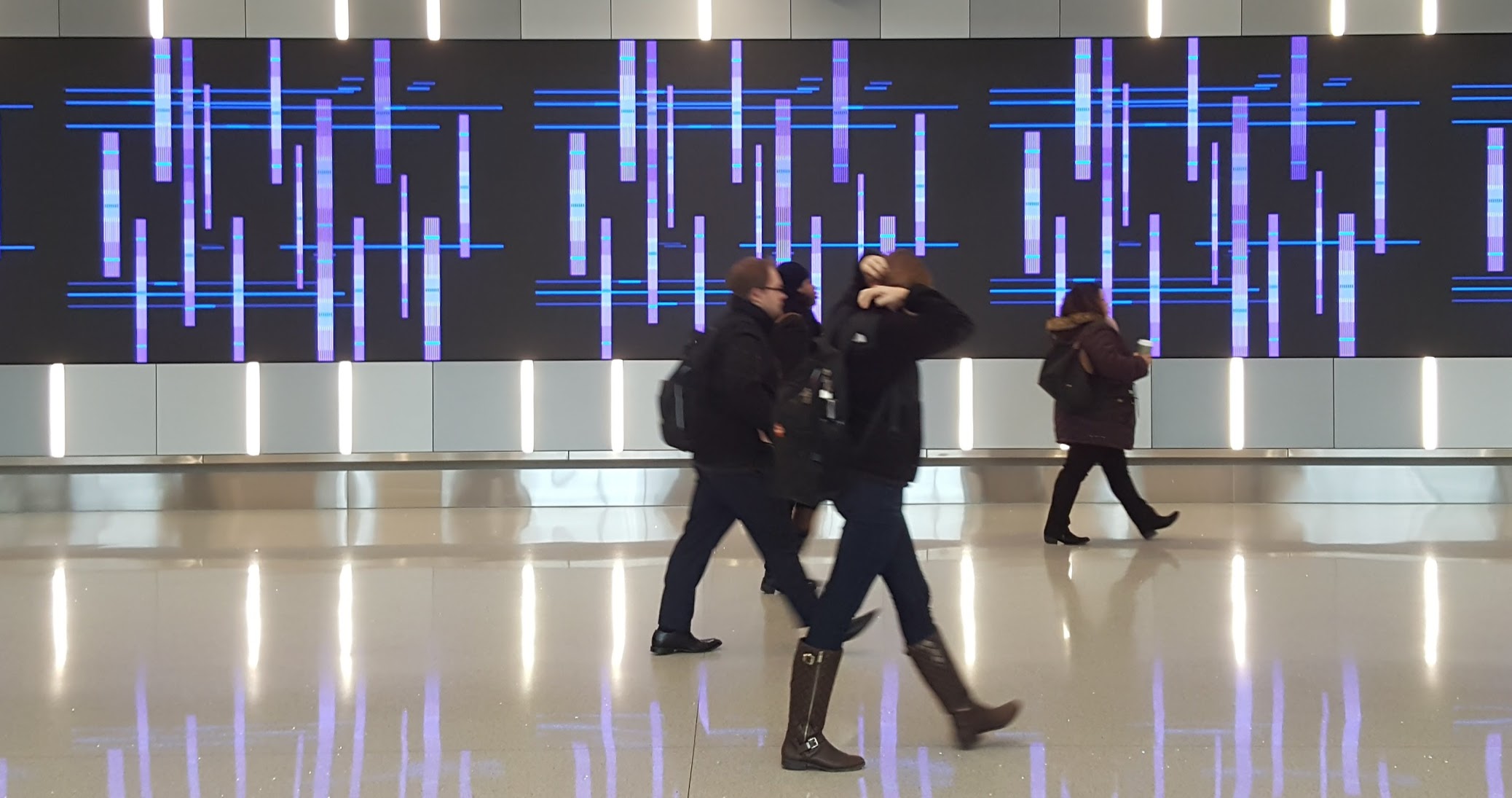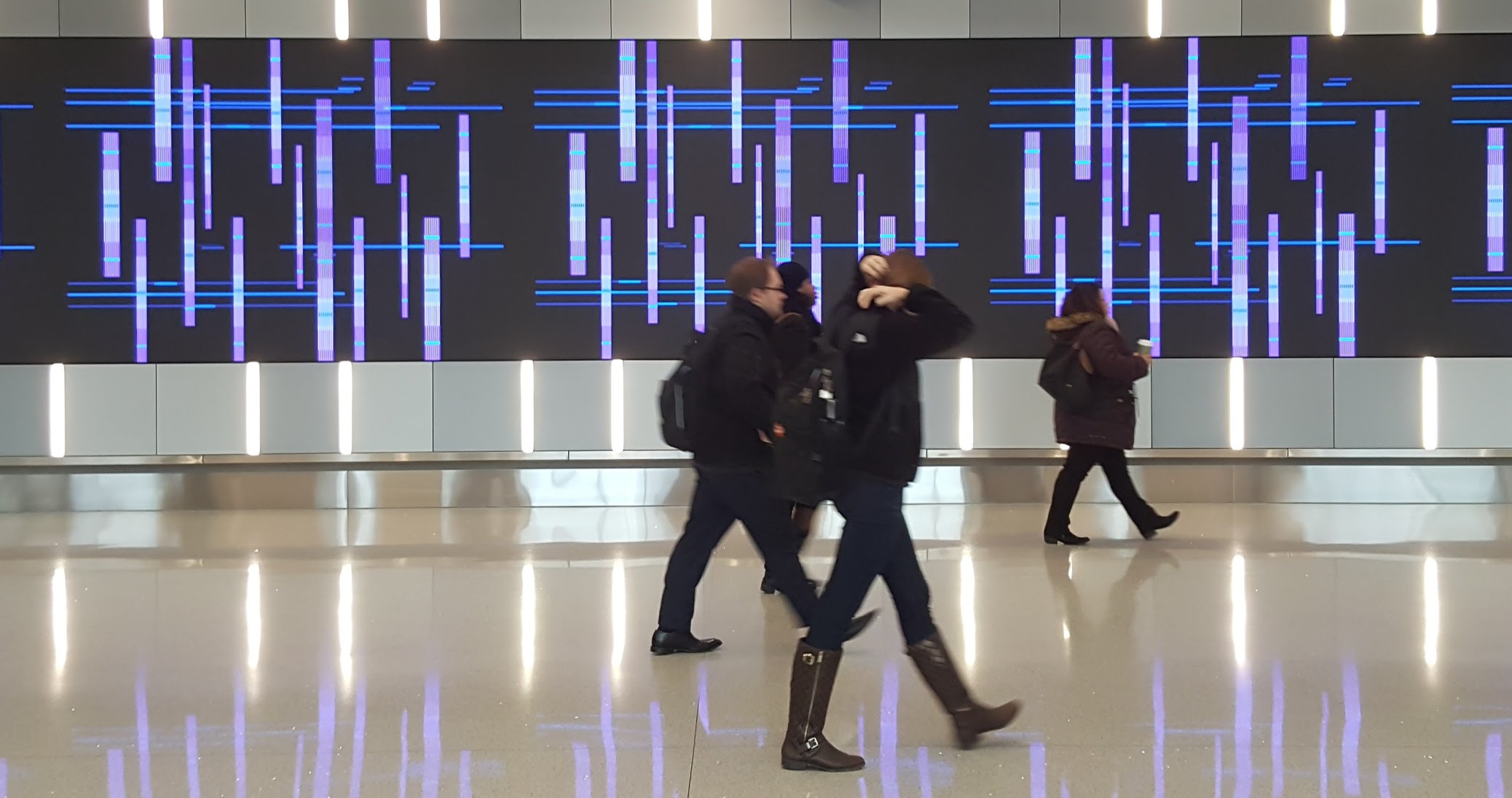
Seven Industries That REALLY NEED Digital Signage
June 4, 2018 by guest author, Samuel Mekonen

Guest Post: Michal Lisewski, Merixstudio
Modern software technologies such as HTML5 make interactive digital signage relatively cheap. As the first generation of digital natives enters the labor market, the expansion of the use of screens has become a necessity. This post looks article aims to point out seven major industries that could benefit more by introducing modern digital signage

Michal Lisewski
It has been more than 100 years since Georges Claude invented the neon sign. The advertising industry was always one of the first in adopting modern technologies, not only promising great profits to its customers but also making a good profit by itself. The informative value of electric light was discovered right after the electricity, and since that time, big city environments benefit widely.
Technology moved forward, and the development of cross-device platforms is one of the milestones of the tech revolution. The digital native generation – people born in the age of the Web and raised on smartphones – is permanently connected through several networks. They schedule their activities, search for discounts, learn for exams, as well as work, using featured software tools.
There are many contexts of using digital signage and provide the information. The development of touchscreens and cross-device technologies breaks new ground for the whole industry.
While gathering information for the article, I asked several digital signage professionals about their thoughts regarding industries that could reap the benefits the most. I mixed their answers within the paragraphs below:
1. Healthcare
I think healthcare is the most under-served at this point and the rise of IoT devices makes it possible to do a lot of patient care areas, from room signs to patient information screens, central desks, etc ….
Considering aging societies, providing efficient medical care is becoming one of the major challenges of the western world. One of the issues to be solved is the exchange of information about the patients, their diets and medicines to be received.
Imagine cloud-based solution that is accessible through touch screens, smartphones as well as staff computers located around the wards. Every nurse and every doctor will have full information about the patient as a matter of milliseconds, without reviewing tons of documents. The data could be delivered by an emergency team and displayed on the screen to prepare the medical staff while the ambulance its on its way. That way, digital signage can save lives.
Besides, family visits, planned surgeries, meal times and other activities can be displayed on the screens and sustain data flow among the health-related facilities.
2. Education
Educational institutions of every level, are struggling with increasing density of population. With crowded schools, providing effective facility management requires possibly up-to-date solutions.
Touch screens near entrances of classrooms can be helpful not only for the freshmen but also teachers, maintenance staff and coaches. Connected with smartphones (c’mon – every student has one!), they ensure that everyone will begin their lesson on time and none of the pupils will miss their History class.
The modern signage solutions are mostly needed among big school buildings, but they would be also useful in kindergartens and nurseries. Touchscreen could provide information regarding workshops, planned school trips and help to keep busy parents and chaperones informed.
3. Facility Management (parking lots & office spaces)
Investment in ‘smart city’ infrastructure has rapidly increased over the past couple of years, with digital signage facilitating the communication of everything from hyperlocal events and traffic delays to wayfinding and, when necessary, emergency messaging. Tailored and relevant content assists in ameliorating the daily journeys of city dwellers and tourists, leading to improved reception of and interaction with the displays.
- Stephanie Gutnik, BroadSign
Hard to find a parking space? Not anymore! Since the first skyscrapers raised, the Facility Management industry made a great leap forward with Class A office buildings. Unfortunately, some of the issues haven’t changed since Empire State opened its doors.
The problem can be solved by web applications connected with smartphones and a network of screens informing tenants about the availability of everything from parking spots to conference rooms. It is believed that, in near future, applications will tell the drivers all around big cities about the availability of the free parking spaces.
4. Industrial Production
I think the important message you need to convey is that digital signage is more than just static content. Content can also be interactive, and hence, more attractive. Otherwise, your digital signage screens are nothing more than expensive wallpaper. Audiences that engage with content will retain more information and are more likely to be receptive to a call to action. It turns a passive activity that can easily be ignored, into an experience that is more memorable.
- Maurice Doran, Digital Signage Expert
The history of touchscreens used by production plants is long, as the heavy-duty machines were one of the first devices operated without a keyboard. Although, much more industries could get from the potential of digital signage.
In-house logistics, materials supply, employee shifts and other everyday issues could be maintained more efficiently with a network of screens adopted among the plants.
5. Public institutions
Indeed, some industries completely ignore (interactive) digital signage. This is however very region-dependent. The main reason it is not used to its full potential (in Belgium) is that companies still are not convinced of the possible impact, which results in not having any focus for signage and thus also not reserving money to do something. (…) Nowadays, the main question is not whether or not to have signage it’s about knowing what you lose by not having it.
- Jochen Deldaele, House of Digital
Facilities such us museums, administration offices, airports, bus & railway stations – all of them become more crowded with growing population every year. To manage the traffic and provide accessible information, local and central authorities should consider interactive signage as a useful tool, benefit from them, and increase their investment.
6. Transportation
We live in an increasingly connected world with screens being our connection to data. Projects like LinkNYC, LinkUK are trends that we believe will rapidly gain momentum as more and more cities see the power of seamless connectivity and information exchange.
Digital signage in transportation hub allows the passenger to get a more holistic information consumption experience that is not just about the timetable but may include the weather, security alerts and more!
In terms of ROI, transportation would be amongst the top three signage segments! You not only provide a better service through timely service alerts but also can intelligently monetize the captive audience at these locations.
- Chirag C Shah of Samsung Public Information Display
7. Retail
One of the ways the anticipate the trends is to encourage retailers to introduce interactive content on their premises. Shop owners can significantly improve the experience of their customer by combining traditional retail with touchscreens displaying offers, product segments (colors, sizes, models, etc.).
Every “location”, may benefit from modern DS if only to provide a “service” to the denizens, may it be information or more an “app”. Like Heathrow airport that gives the time to get to the City centre by metro, taxi etc. ), something fun, something that moves you or makes you feel good, etc.
- Ke-Quang Nguyen-Phuc, Quividi
Online selling is extremely attractive for individual customers and constitutes an increasing threat to traditional trade. Therefore, retailers should reach for the latest solutions to stand out from the crowd. Signage solutions make it possible to present good in a more attractive way as well as interact customers with the store and selected offers (for example, through QR codes). Modern technology does not have to be an executioner for malls, it can help them gain their traffic.
Summary
The digital natives generation is the most demanding consumer group. Following their needs will satisfy not only them, but also other age groups. At the dawn of smart cities, implementing up-to-date and top-notch solutions in the trade and service can be helpful and a step forward for every modern society.



Yes, you almost covered all the industries which require more attention to digital signage. And you can also consider hospitality and automotive industry in that list.